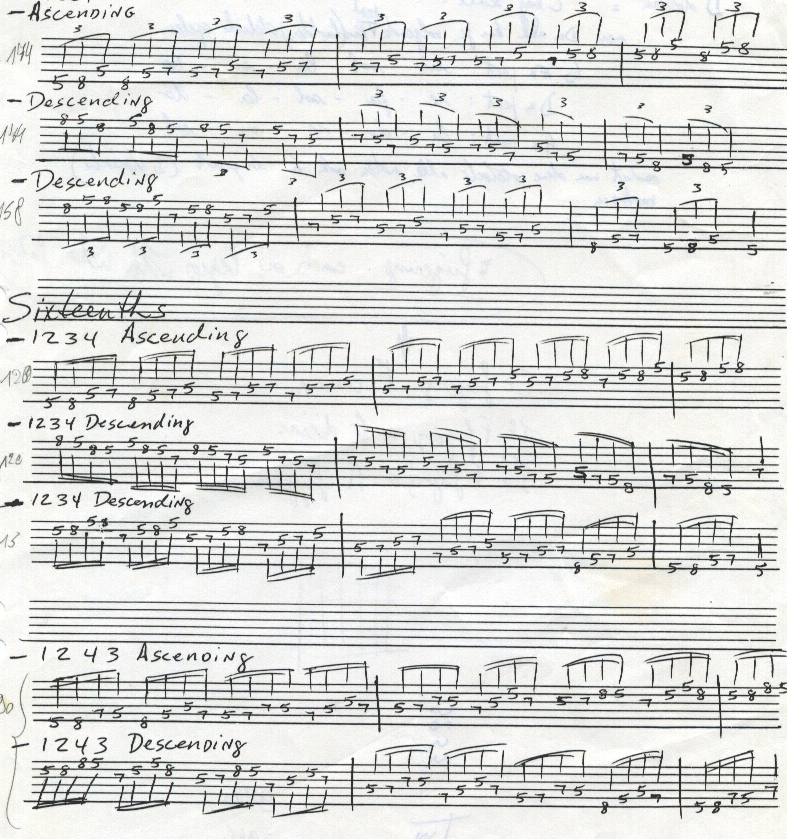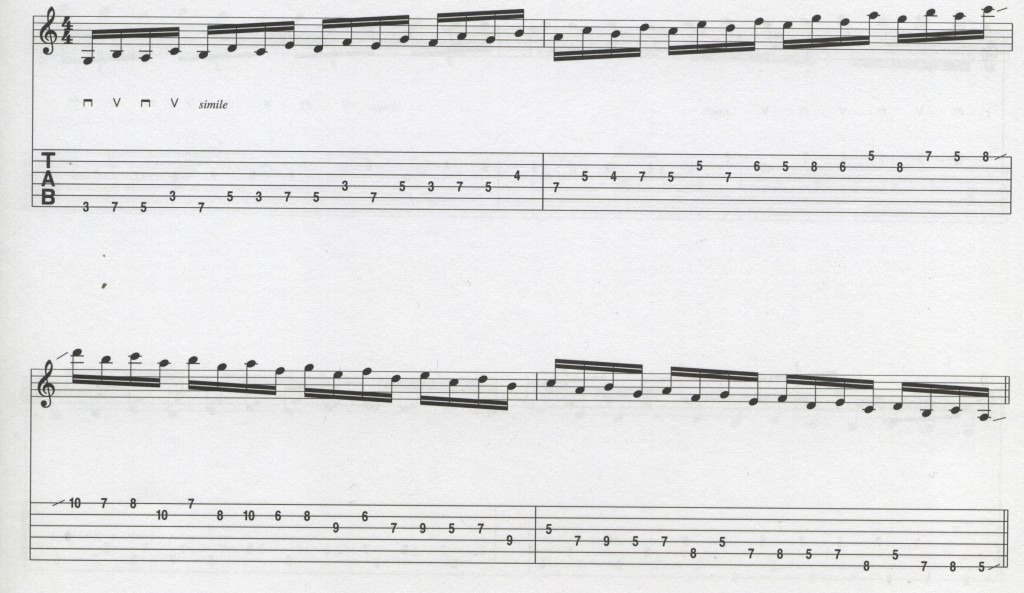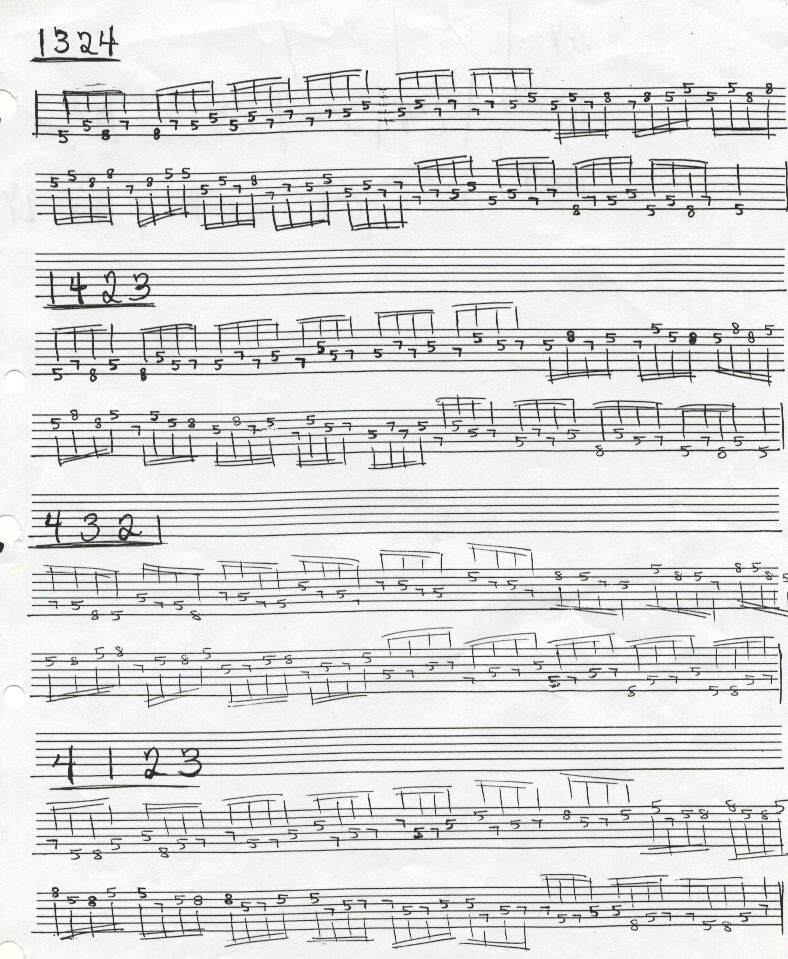Scale Patterns
Check one of my favorite guitar players, Shawn Lane, using scale patterns in the following video at 00:49, at 2:27, at 2:49, at 3:11
Also check out his otherworldly, surreal, ridiculous guitar playing later in the video.
The scale pattern is easier to distinguish in the guitar solo in Dream Theater’s “Erotomania”
Check at 5:00 and 5:08 all the way through to 5:24
Scale patterns really are akin to melodic sequences.
One could claim they are exactly the same thing, and in theory, they are.
Yet somehow: I always liked to categorize scale patterns and melodic sequences as slightly different things.
I’m sure I’m merely venturing into semantics probably now, but I make the distinction based on how both are performed and thought about.
In scale patterns, your focus as a player is more on performing an actual scale fingering. You play a 3-4 note phrase that you vertical sequence from the lowest to the highest string or vice versa. Hence to me, for whatever it is worth: I think about “scale patterns” more as a vertical approach.
When you play melodic sequences on the other hand: your focus is more on melody, and less on scale shapes. You play a 3-4 note melodic contour, which you then repeat on different starting notes in the scale. “Melodic sequences” always had a more “horizontal/linear” feel to me.
Practicing Scale Patterns is Good For You.
Again: theoretically, they are the same thing really.
My feeling there is a slight difference between both is more a subjective thing.
Playing scale patterns improves picking technique, coordination between both hands, strength, scale knowledge, and much more.
Hearing a scale played in different patterns, is also good ear training.
Another thing you get out of practicing this (as showcased in the above 2 videos), is that you can use scale patterns to create melodic ideas.
Using scale patterns in your guitar solos adds direction and forward motion to the storytelling in your solo.
The repetitive nature of the melodic sequence that makes up a scale pattern,
You can come up with your own patterns.
Here’s the system:
- Come up with a series of 3 or 4 numbers, for example, 1234
- These numbers represent intervals: so 1234 in the key of C, would give you the notes CDEF if you start the number series on a C note.
- You create what is called a scale pattern (or melodic sequence) when you carry this number series around to different starting notes in the key.
- When you move up the C scale, you then get CDEF followed by DEFG, followed by EFGA, FGAB, GABC, etc… And there you go: that is a melodic sequence or scale pattern.
You could have any number sequence:
135 for example, CEG
Moving this around the C major scale, gives you: CEG, DFA, EGB, FAC, etc…
Here are some examples of scale patterns to get you started. 🙂



Conclusion
Come up with your own scale pattern exercises, creating number sequences on the fly: 1654 for example. (Jump up a 6th, then walk down to the 5th followed by the 4th)
Then play that intervallic sequence on the next note of the scale, then on the next, then on the next, etc.
The sky is the limit.
This is going to keep you busy for a long time. 🙂
Hit me up anytime at vreny@zotzinmusic.com if you have any questions, or if you would like to book a lesson.
These free lessons are cool, but you will never experience the progress, joy, and results that my students experience in lessons when you’re learning by yourself from blogs and videos.
That is why people take lessons: way better results and progress, much more complete information, exposed to way more creative ideas than you can get from a blog or YouTube video.
There is only so much that self-study can accomplish.
If you want to see amazing results and progress in your guitar playing, buy your first lesson here and get started ASAP.
You’ll impress your friends and loved ones in no time with your guitar playing!
Consider donating any small amount to help me keep this blog going.
Thank you for your support!


